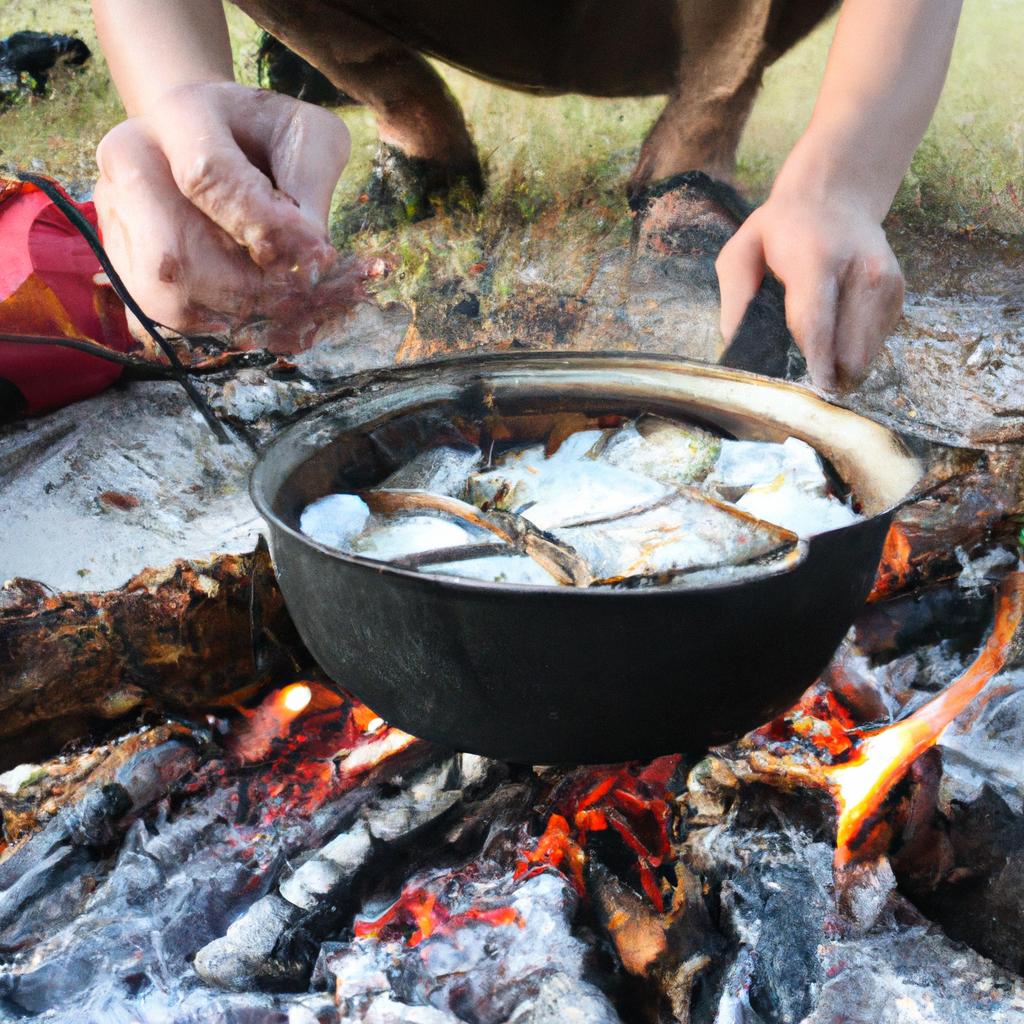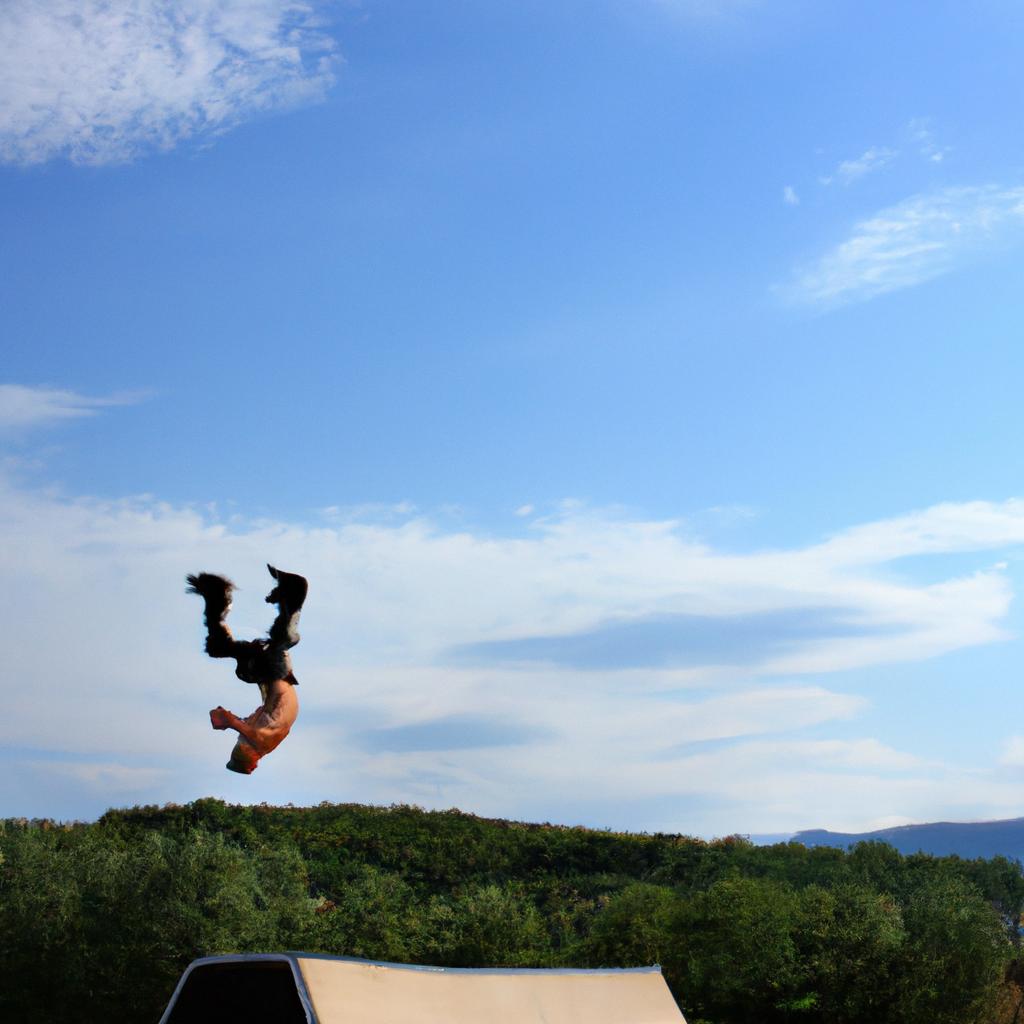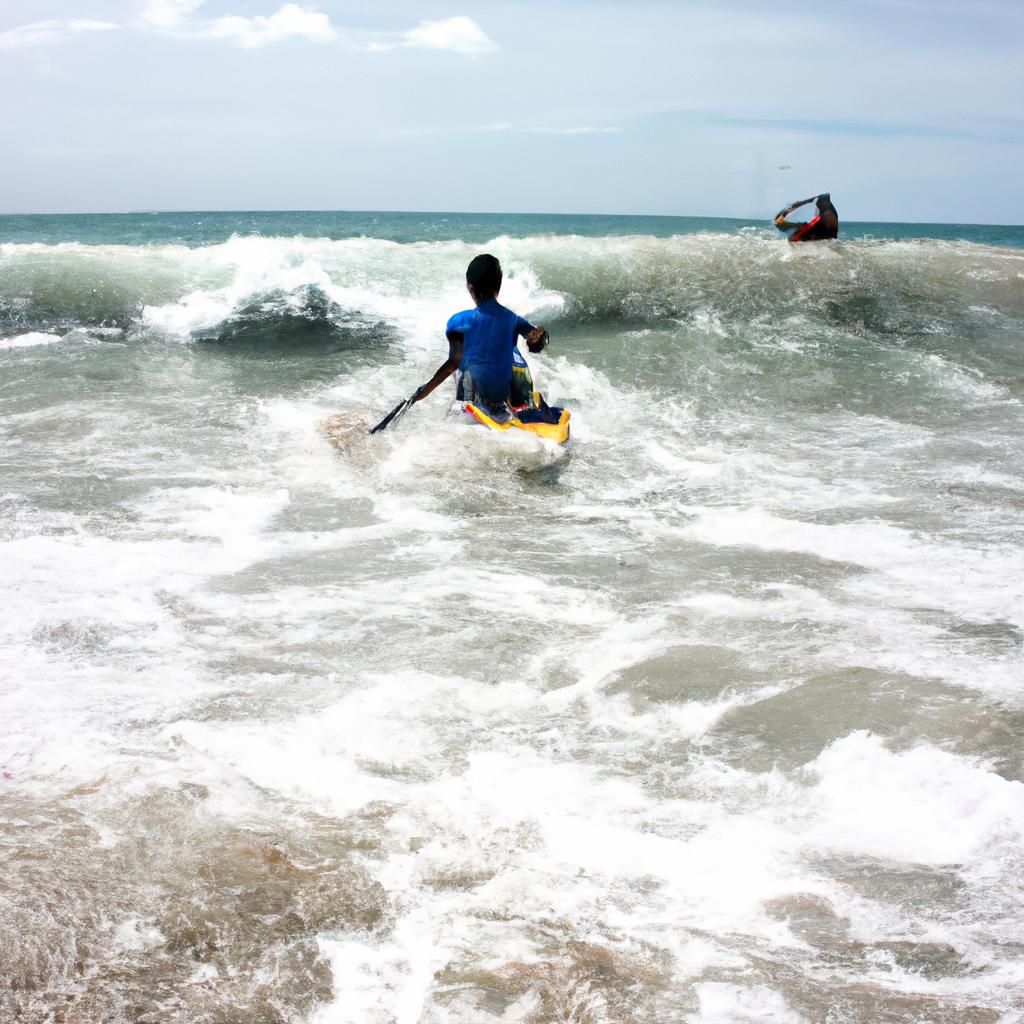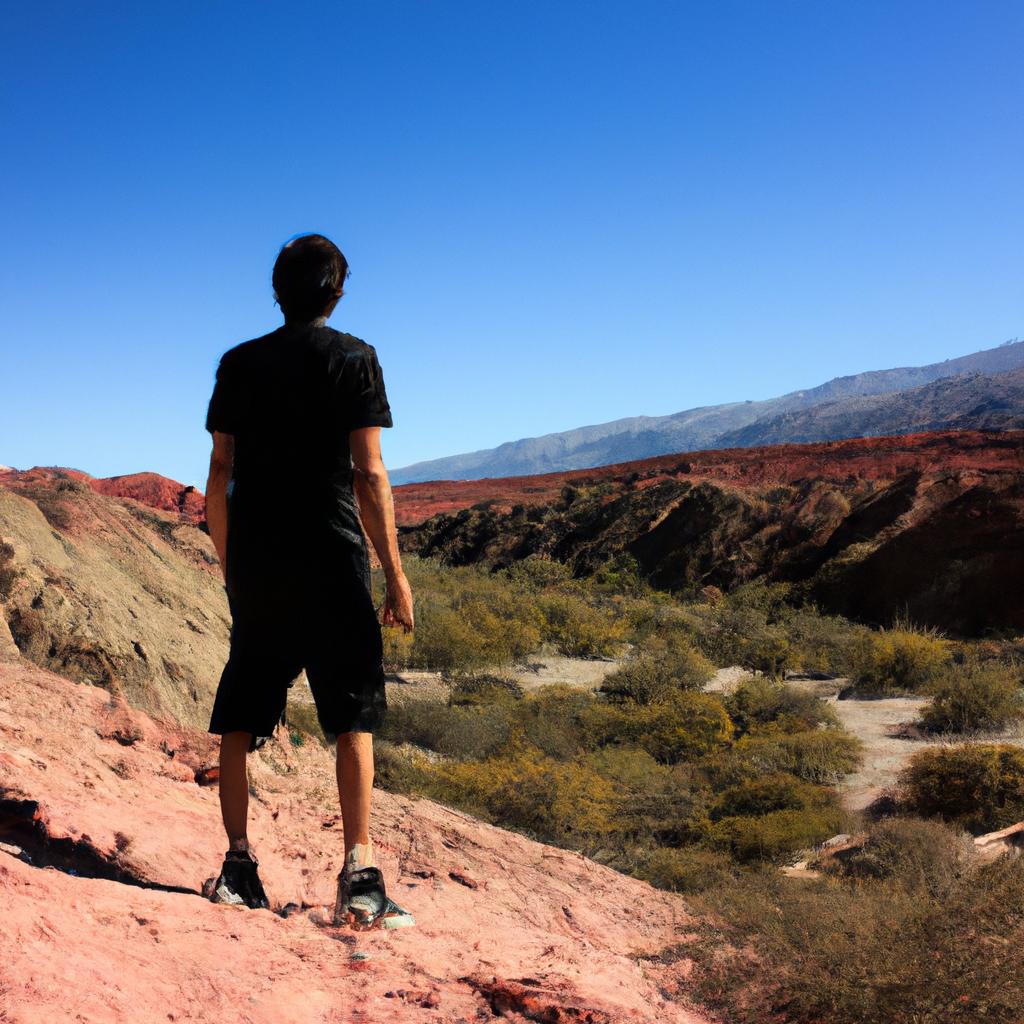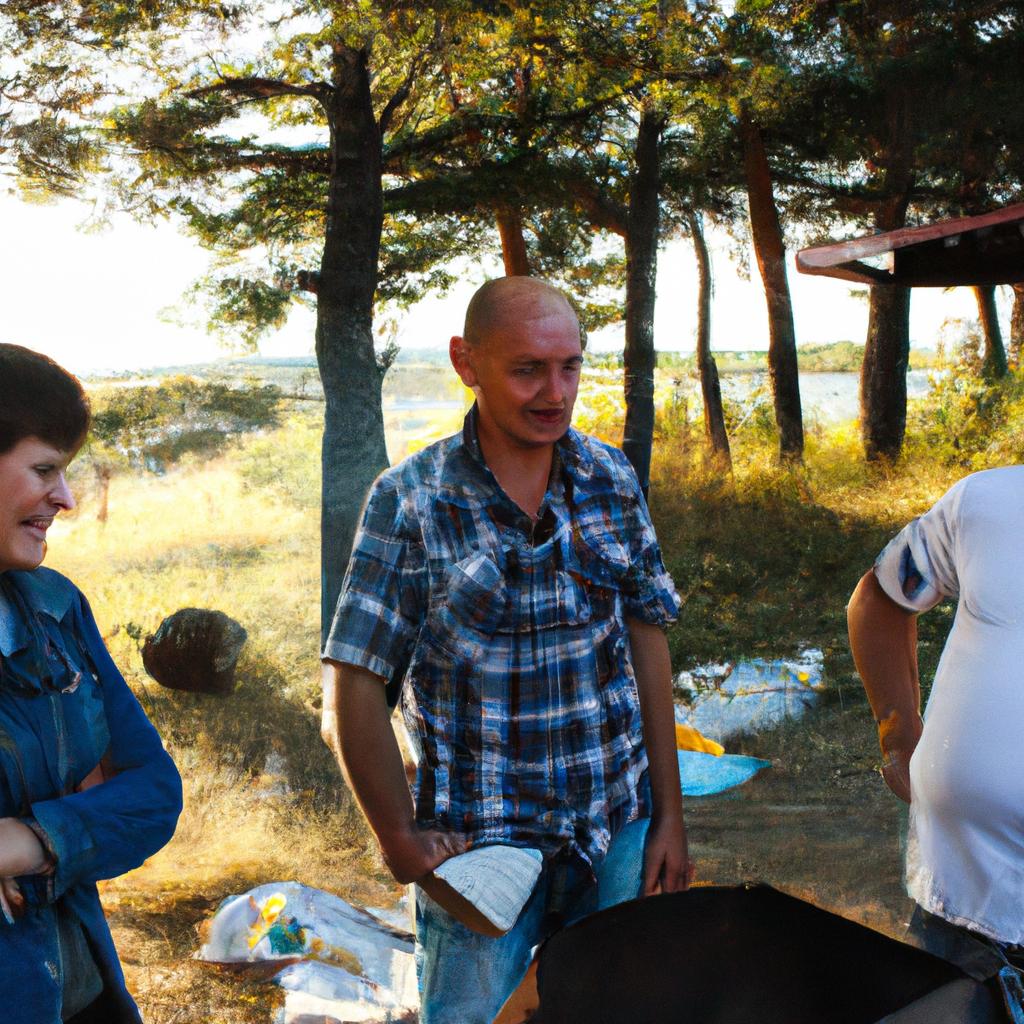Campfire cooking is a beloved tradition for campgrounds and outdoor enthusiasts alike. The crackling flames, the smoky aroma, and the sizzling sound of food being prepared over an open fire evoke feelings of nostalgia and adventure. Whether it’s roasting marshmallows for s’mores or grilling fresh fish caught from a nearby lake, campfire cooking offers a unique culinary experience that connects individuals with nature in ways that traditional indoor cooking cannot replicate.
One example of how campfire cooking can enhance the camping experience is through the creation of foil packet meals. Imagine sitting around a roaring fire after a long day of hiking, unwrapping a tightly sealed foil packet to reveal perfectly cooked vegetables, tender meat, and fragrant herbs. This simple yet effective method allows campers to prepare delicious meals with minimal effort and cleanup while still enjoying all the flavors and textures that come from slow-cooking over an open flame. Moreover, this technique showcases the versatility of campfire cooking as it can accommodate various dietary preferences and restrictions.
In this article, we will delve into the art of campfire cooking by providing practical tips, techniques, and recipes for both novice cooks and seasoned outdoor enthusiasts. We will explore different methods such as direct heat grilling, indirect heat baking , and using a dutch oven for slow-cooked meals. We will also discuss essential tools and equipment needed for campfire cooking, as well as safety precautions to ensure an enjoyable and safe experience.
Direct heat grilling is a popular method of campfire cooking that allows for quick and flavorful meals. Whether it’s juicy steaks, tender chicken, or grilled vegetables, direct heat grilling imparts a smoky flavor and charred exterior that adds depth to the dishes. To achieve optimal results, it’s important to have a hot fire with consistent heat. This can be achieved by arranging the coals in a single layer or using a grill grate over the flames. It’s also crucial to have proper utensils such as long-handled tongs and spatulas to handle the food safely.
Indirect heat baking is another technique that can be used for campfire cooking. This method involves placing food away from the direct flames but still within the vicinity of the fire’s heat. It is particularly suitable for dishes that require longer cooking times or gentle heat, such as casseroles, bread, or desserts. To create indirect heat, you can either push the coals to one side of the fire pit or use a charcoal chimney starter to create two separate zones of heat.
Using a dutch oven is a versatile way to cook delicious meals while camping. A dutch oven is essentially a heavy cast-iron pot with thick walls and a tight-fitting lid. It retains heat exceptionally well and allows for even cooking throughout the dish. With a dutch oven, you can prepare stews, soups, roasts, and even baked goods. Simply place it directly on top of hot coals or suspend it over the fire using tripod stands or chains.
When engaging in campfire cooking, it’s important to prioritize safety. Always make sure you are in compliance with any regulations regarding fires at your campground or outdoor area. Keep a bucket of water or sand nearby to extinguish the fire if necessary. Use long-handled utensils and oven mitts to protect yourself from burns. Ensure that your food is cooked thoroughly to prevent any foodborne illnesses.
In conclusion, campfire cooking offers a unique and enjoyable way to prepare meals while camping. Whether you’re grilling over direct heat, baking with indirect heat, or using a dutch oven, there are various techniques and recipes to explore. By following safety precautions and utilizing proper tools, you can create delicious and memorable meals that will enhance your camping experience. So gather around the fire, unleash your inner chef, and savor the flavors of campfire cooking!
Choosing the Right Cooking Equipment
Choosing the Right Cooking Equipment
Imagine this scenario: you are sitting around a crackling campfire, surrounded by nature’s beauty, and feeling a sense of tranquility that only comes from being in the great outdoors. As dusk settles in, hunger strikes, and it’s time to start cooking your meal over the open flames. But wait! Do you have the right cooking equipment to ensure a successful campfire cooking experience? In this section, we will explore some key factors to consider when choosing the right cooking equipment for your camping adventures.
First and foremost, portability is essential when selecting campfire cooking equipment. Whether you’re hiking through rugged terrains or setting up basecamp at a remote campground, having lightweight and compact gear is crucial. For example, imagine carrying heavy cast-iron cookware during an arduous trek – not only would it be physically demanding but also impractical. Opting for durable yet lightweight materials like stainless steel or aluminum can significantly ease the burden without compromising functionality.
Next on our list is versatility. When camping, space is often limited, so having multi-purpose cooking tools saves both precious room and valuable resources. A knife with various blades or utensils that serve multiple functions can go a long way in simplifying your outdoor culinary endeavors. Additionally, investing in cookware sets with interchangeable lids and detachable handles allows for efficient packing while providing flexibility in different cooking techniques.
Furthermore, durability plays a vital role in ensuring longevity amidst harsh outdoor conditions. Campfires generate intense heat and exposure to elements such as rain or snow can pose challenges to your equipment’s integrity. Look for products designed specifically for outdoor use with features like non-stick coatings resistant to rust or corrosion. This investment will not only save you money in the long run but also provide peace of mind knowing that your gear will withstand years of reliable service.
Lastly, affordability should always be considered when shopping for campfire cooking equipment. While quality and durability are important, it’s equally necessary to find options that fit your budget. Researching various brands, comparing prices, and reading customer reviews can help you make informed decisions without compromising on functionality or reliability.
In summary, when selecting the right campfire cooking equipment, keep in mind portability, versatility, durability, and affordability. Having lightweight gear that serves multiple purposes while enduring outdoor elements will enhance your camping experience. With these factors in mind, let us now explore fire safety tips for campfire cooking to ensure a safe and enjoyable adventure.
Fire Safety Tips for Campfire Cooking:
Fire Safety Tips for Campfire Cooking
With the right cooking equipment in hand, you are now ready to venture into the world of campfire cooking. Before we dive into fire safety tips, let’s explore some delicious recipes that can be prepared over an open flame.
Section H2: Campfire Recipes for Outdoor Cooking
To illustrate the versatility of campfire cooking, imagine this scenario: You and your friends have just finished a challenging hike through rugged terrain. As hunger sets in, you gather around the crackling fire and prepare a mouthwatering meal together. One person skewers marinated chicken kebabs onto metal sticks while another wraps potatoes in foil and places them directly on hot coals. The aroma fills the air as sizzling vegetables are tossed in a cast-iron skillet atop the grill grate. In no time, everyone is rewarded with a satisfying feast that warms both body and soul.
Here are four essential ingredients commonly used in campfire recipes to help elevate your outdoor culinary experience:
- Fresh produce: Utilize seasonal fruits and vegetables to add vibrant flavors and nutritional value to your meals.
- Protein sources: From marinated meats to hearty legumes or tofu, protein-rich options provide sustenance during outdoor adventures.
- Grains and starches: Incorporate rice, pasta, bread, or quinoa for energy-packed carbohydrates that fuel your activities.
- Condiments and spices: Enhance the taste of your dishes by bringing along small containers of favorite sauces, herbs, or spices.
| Recipe | Ingredients | Preparation Method |
|---|---|---|
| Foil-wrapped fish | Fresh fish fillets | Season with herbs |
| Lemon slices | Wrap tightly in foil | |
| Butter | Cook over hot coals | |
| Salt and pepper | ||
| —————— | ——————————– | ————————– |
| Campfire chili | Ground beef or beans | Brown in a skillet |
| Onion, garlic, bell peppers | Add vegetables and sauté | |
| Canned tomatoes, broth | Simmer over the fire | |
| Chili powder, cumin | Season to taste |
As you experiment with these recipes and discover your own favorites, remember that campfire cooking not only nourishes your body but also creates lasting memories around shared meals.
Now that we’ve explored some tantalizing campfire recipes, let’s shift our focus to the essential task of prepping and packing food for your upcoming outdoor excursion.
Prepping and Packing Food for Your Trip
Example Scenario:
Imagine embarking on a weekend camping trip with friends. As you set up your tents and unpacked your gear, hunger strikes. You reach into your backpack only to realize that you forgot to pack any food! Without proper planning and preparation, even the most scenic campground can quickly become an unpleasant experience.
To ensure that such mishaps are avoided, it is essential to plan ahead when it comes to food for your camping trip. Here are some key considerations to keep in mind:
-
Meal Planning:
- Make a detailed meal plan before leaving home.
- Consider dietary restrictions or preferences of everyone in your group.
- Opt for meals that require minimal ingredients and equipment but offer maximum flavor.
-
Proper Storage:
- Pack perishable items in a cooler with ice packs or frozen water bottles.
- Keep raw meat separate from other foods to prevent cross-contamination.
- Utilize resealable bags or containers to store dry goods securely.
-
Lightweight Options:
- Choose lightweight ingredients to minimize the weight of your backpacks.
- Dehydrate fruits, vegetables, and meats beforehand for easy transportation.
- Select compact cooking utensils and multi-purpose tools for convenience.
-
Waste Management:
- Aim for zero waste by minimizing packaging materials brought along.
- Dispose of food scraps responsibly by burying them away from wildlife areas.
- Bring reusable containers or bags for leftovers instead of disposable options.
By adhering to these guidelines, you can ensure that meals during your camping trip will be both nourishing and enjoyable. With your food preparations taken care of, let us now delve into the realm of delicious and easy campfire recipes that will enhance your outdoor cooking experience.
With a well-prepared food plan in mind, it’s time to explore some mouthwatering campfire recipes that are both simple and satisfying. So, grab your apron and prepare for culinary delight amidst nature’s embrace.
Delicious and Easy Campfire Recipes
As you prepare for your camping trip, having packed all the necessary food items and ingredients, it’s time to explore some delicious and easy campfire recipes that will satisfy your hunger while enjoying the great outdoors. Whether you’re a seasoned camper or just starting out, these recipes are designed to be simple yet flavorful, making them perfect for any outdoor enthusiast.
Imagine sitting around the crackling fire as the sun sets, breathing in the fresh air while savoring a warm meal cooked over an open flame. One such recipe is hearty foil packet dinners. By sealing different combinations of meat, vegetables, and seasonings in aluminum foil and placing them directly on hot coals or grill grates, you can create a mouth-watering dish with minimal effort. For example, try combining chicken breast with sliced potatoes, onions, bell peppers, and a sprinkle of Italian seasoning for a delectable one-packet meal.
To add even more excitement to your camping culinary adventure, here are four reasons why campfire cooking is truly extraordinary:
- It enhances the flavor: Cooking over an open fire imparts a smoky aroma and distinct taste to your meals that cannot be replicated in traditional kitchen settings.
- It fosters communal dining: Gathering around the campfire to cook and share meals creates a sense of camaraderie among fellow campers.
- It reconnects us with nature: Preparing food outdoors allows us to appreciate our surroundings and form a deeper connection with the natural environment.
- It provides a break from technology: Unplugging from screens while cooking on an open fire encourages mindfulness and relaxation.
In addition to foil packet dinners mentioned earlier, there are numerous other delightful campfire recipes waiting to be explored. The table below showcases three popular options:
| Recipe | Ingredients | Prep Time | Cook Time |
|---|---|---|---|
| S’mores Banana Boats | Bananas, chocolate chips, | 5 minutes | 10 minutes |
| marshmallows, graham crackers | |||
| Campfire Chili | Ground beef, onions, beans, | 15 minutes | 45 minutes |
| bell peppers, chili powder | |||
| Grilled Peach Salad | Fresh peaches, mixed greens, | 10 minutes | 8 minutes |
| with Balsamic Glaze | goat cheese, balsamic glaze |
With these recipes and more at your disposal, you’ll be able to enjoy a variety of delicious meals during your camping trip. Transitioning into the subsequent section about “Cooking Techniques for Campfire Meals,” we will explore different methods to achieve optimal results over an open flame.
Cooking Techniques for Campfire Meals
Transitioning from the previous section on delicious and easy campfire recipes, let’s now explore some essential cooking techniques that will help you elevate your campfire meals. By mastering these techniques, you’ll be able to create a wide variety of mouthwatering dishes in the great outdoors.
Imagine this scenario: You’re at your favorite campground, surrounded by towering trees and crisp fresh air. After setting up your campsite, you gather around the crackling fire with your friends or family. Tonight, you plan to make a hearty stew using ingredients sourced from local farmers’ markets. This is where cooking techniques come into play – they ensure that your meal turns out flavorful and satisfying.
To begin with, proper heat management is crucial when cooking over an open flame. Understanding how to control and adjust the intensity of the fire can significantly impact the outcome of your dish. For instance, searing meat requires high direct heat for a brief period, while slow-cooking beans necessitates low indirect heat over an extended period. Mastering temperature regulation allows you to achieve optimal results in terms of texture and flavor.
Another essential technique is utilizing foil packets or Dutch ovens for efficient cooking. Foil packets are perfect for steaming vegetables or grilling fish without worrying about them falling through the grates. On the other hand, Dutch ovens provide versatile options for baking bread, simmering stews, or roasting meats directly over hot coals. These tools not only simplify outdoor cooking but also enhance flavors by allowing ingredients to cook evenly and retain moisture.
Lastly, don’t forget about marinades and rubs as indispensable elements in campfire cuisine. Marinating meat before grilling adds depth of flavor while tenderizing it simultaneously. Rubbing dry spices onto proteins imparts intense aromas during cooking, creating a delightful sensory experience around the campfire. Experimenting with different combinations of herbs, spices, oils, and acids enables you to customize each dish to suit your preferences.
Now that we’ve explored some essential cooking techniques for campfire meals, let’s move on to the next section about cleaning and maintaining your campfire cooking gear. Proper maintenance ensures longevity and continued enjoyment of your outdoor culinary adventures.
Cleaning and Maintaining Your Campfire Cooking Gear
By ensuring proper maintenance and cleanliness, you can extend the lifespan of your equipment while also promoting a safe and enjoyable camping experience.
Example: Imagine this scenario – you have just returned from a long day of hiking and are looking forward to a delicious meal prepared over the campfire. However, as you unpack your cooking gear, you notice that it is covered in soot and residue from previous meals. Not only does this affect the taste and quality of your food, but it also poses potential health risks due to cross-contamination. This emphasizes the importance of regularly cleaning and maintaining your campfire cooking gear.
To effectively clean and maintain your campfire cooking gear, consider implementing the following practices:
- Rinse with hot water: After each use, rinse off any food residues or grease from pots, pans, utensils, and grates using hot water. This will help prevent stubborn build-up that becomes harder to remove later on.
- Use biodegradable soap: For more thorough cleaning, use a mild biodegradable soap specifically designed for outdoor use. Avoid harsh chemicals or abrasive cleaners that may damage the surface of your cookware.
- Scrub gently: Utilize soft-bristle brushes or scrub pads to gently scrub away any remaining dirt or stains without scratching the surfaces.
- Dry thoroughly before storing: Once cleaned, make sure all items are completely dry before packing them away. Moisture left behind can lead to rusting or mold growth.
Maintaining proper hygiene in campfire cooking:
- Ensures food safety
- Enhances flavor and overall dining experience
- Extends the life span of your equipment
- Reduces environmental impact by preventing waste
Table example:
| Gear Type | Cleaning Method | Frequency | Importance |
|---|---|---|---|
| Pots and pans | Rinse with hot water | After each use | High |
| Utensils | Use biodegradable soap | As needed | Medium |
| Grates | Scrub gently | After each use | High |
In conclusion, maintaining clean and well-maintained campfire cooking gear is essential for both practical and health reasons. By incorporating proper cleaning techniques into your camping routine, you can ensure a safe and enjoyable culinary experience amidst the great outdoors. Remember to rinse, scrub gently, and dry thoroughly before storing your equipment, ensuring its longevity while also minimizing any negative environmental impact. So, embark on your next outdoor adventure armed with clean cooking gear that will elevate your meals around the campfire.

